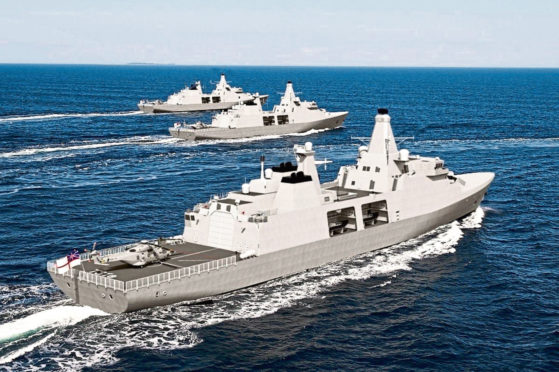Royal Navy frigates would still be built in an independent Scotland, First Minister Nicola Sturgeon has said.
Responding to a question by Mid Scotland and Fife MSP Murdo Fraser, Ms Sturgeon insisted contracts would still come to Scotland if the country separates from the UK because of the quality of work emanating from the nation’s shipyards.
The SNP leader also acknowledged the recent announcement to build new Type 31 frigates in Fife following an order from the UK Government, at a cost of £1.25 billion.
Scottish Conservative Mr Fraser asked how many Royal Navy frigates would be built should the country become independent.
Ms Sturgeon said: “Scotland has a rich heritage and expertise in shipbuilding.
“I am delighted about the recent announcement for Babcock at Rosyth.
“Scotland, as an independent nation, would still support shipbuilding.
“(Companies) would win contracts because they are the best at what they do.”
Babcock’s Rosyth workforce previously delivered a major contract to assemble two Queen Elizabeth aircraft carriers for the MoD.
It was announced this week the development of shipbuilding at Babcock had boosted the company’s revenue to more than £4.9 billion.
Construction of the new frigates is expected to begin in 2021 at Rosyth, with the contract meaning work will continue at the site until 2028.
